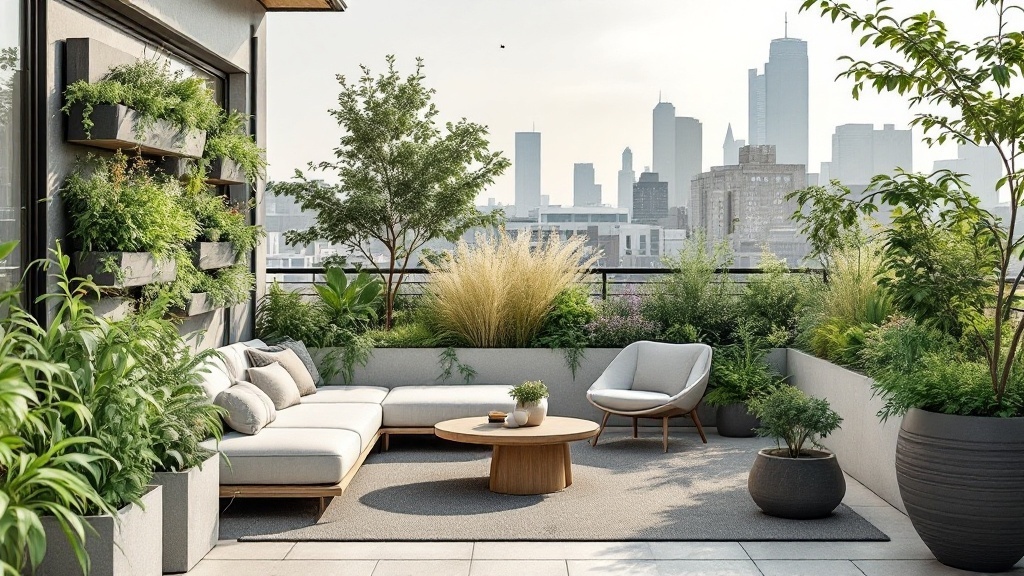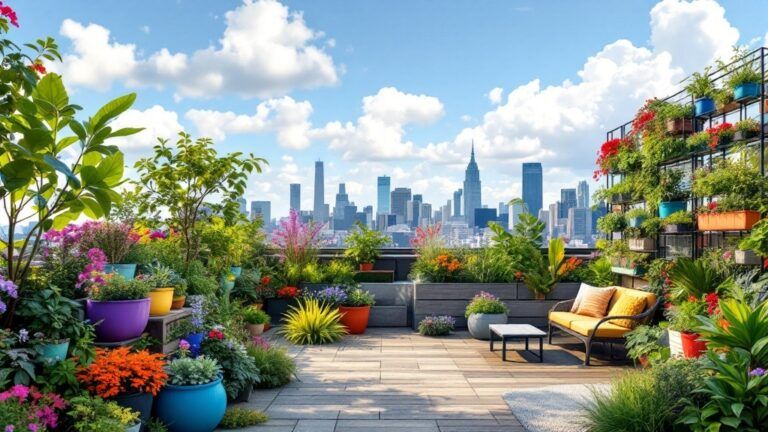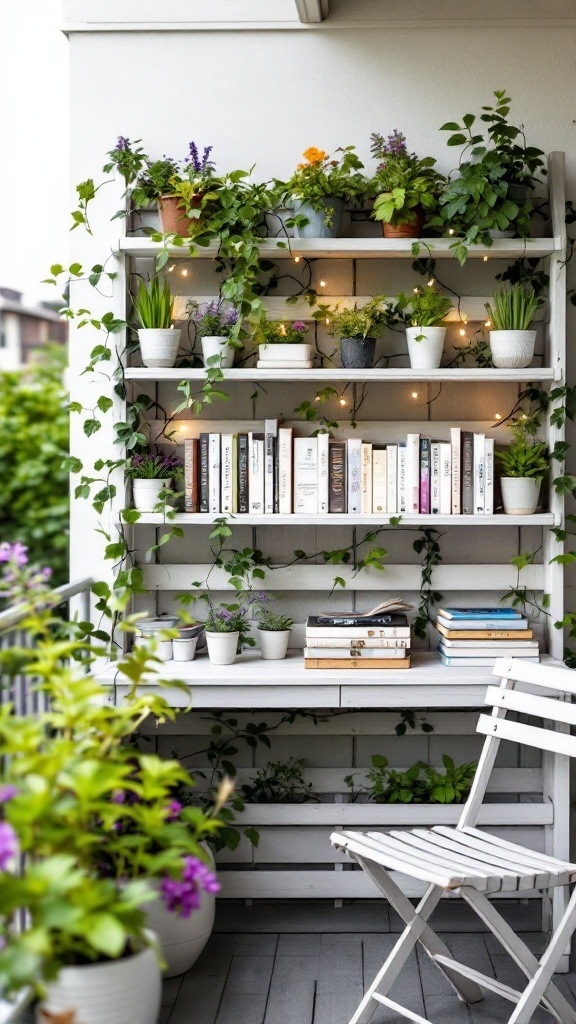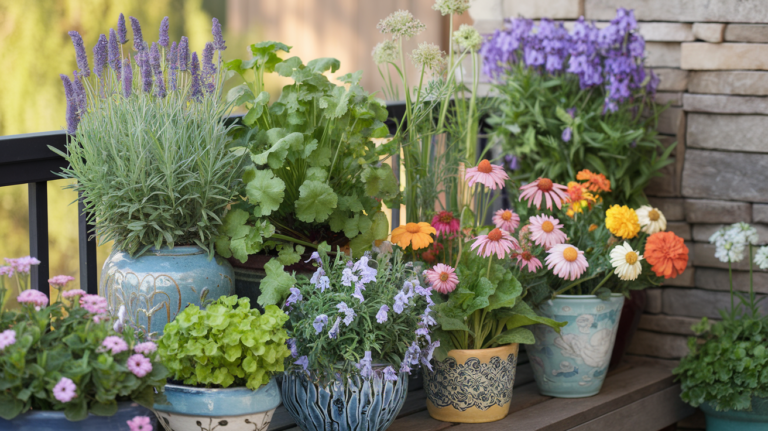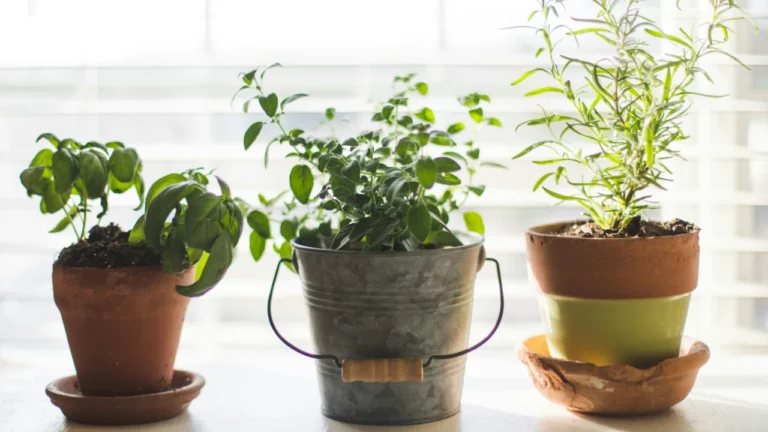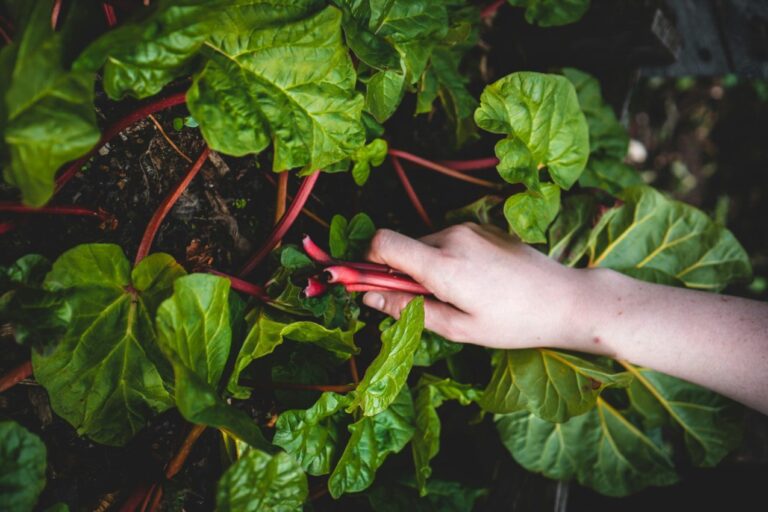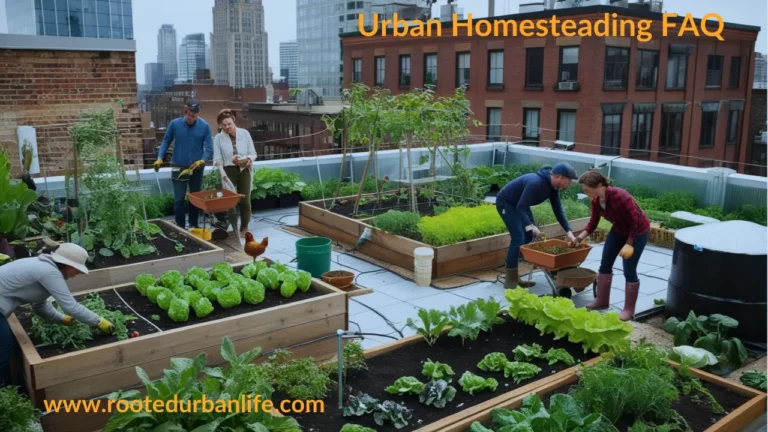12 Genius Wellness Garden Ideas for Small Urban Spaces
(That Actually Work on Balconies, Patios, and Tiny Backyards)
“Can I really create a healing garden on my tiny apartment balcony?”
If this sounds familiar, you’re in the right place. Small urban spaces can feel more like concrete cages than calming oases—but with a little intention and a few clever ideas, that cramped patio or strip of gravel can become a restorative retreat for your mind, body, and soul.
Research keeps showing what our ancestors already knew: connecting with nature reduces anxiety, improves focus, and makes us feel better overall. But what happens when you’re surrounded by traffic, noise, and nosey neighbors?
Good news: you don’t need acreage—or even a lawn—to experience the magic of a wellness garden. These 12 ideas are tailor-made for balconies, fire escapes, patios, or the tiniest courtyard imaginable.
What You Will Learn:
In this comprehensive guide, you’ll discover how intentional garden design can transform your compact outdoor area into a therapeutic retreat that nurtures both mind and body, regardless of square footage constraints.
- 12 actionable wellness garden strategies specifically tailored for small urban spaces
- Beginner-friendly techniques requiring minimal gardening experience or specialized tools
- Evidence-based approaches to maximize therapeutic benefits within limited spatial footprints
Ready to build your own peaceful plant-powered sanctuary? Let’s dig in
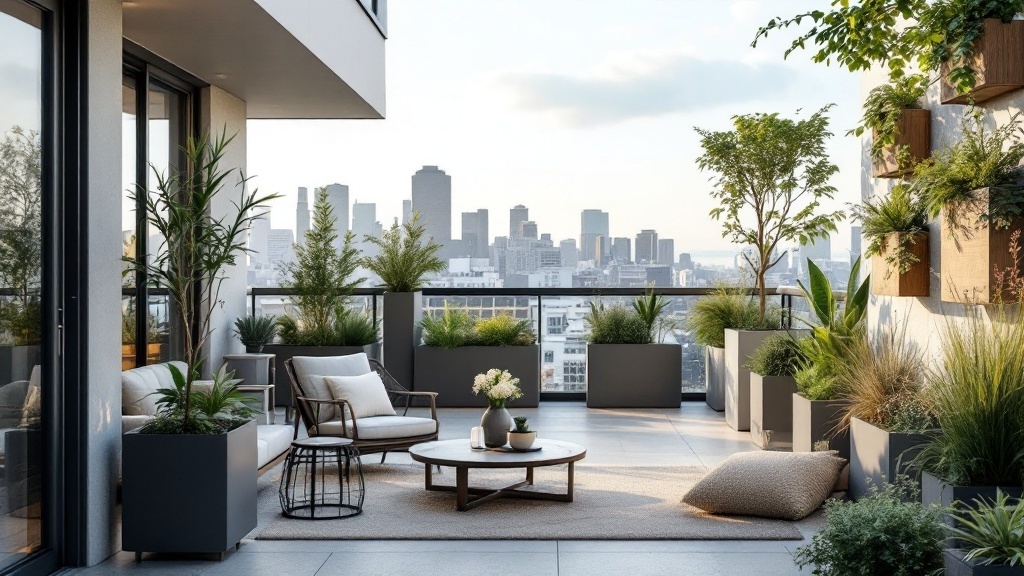
1 Begin With Your Senses: Map the Energy of Your Space
Before you bring home a single plant, pause. Go outside. Close your eyes.
What do you hear? Smell? Feel? Where does the sun hit first? Where does it hide?
This step isn’t fluff—it’s called sensory mapping, and it’s foundational for designing a wellness garden that feels right.
Try This:
- Stand in your space at different times of day
- Note the warmest/coolest spots
- Notice scent trails, like exhaust vs. bakery air
- Listen for birds, traffic, wind, or quiet
- Identify which corner makes you instinctively exhale
Why it works: Our bodies respond intuitively to sensory input. A corner that’s breezy and dappled in morning sun may calm you more than a shaded nook—even if the latter seems “prettier” on paper.
Gamify It: Sketch your balcony or patio and draw emoji-style icons in zones: ☀️ for sun, 🌬️ for wind, 👃 for scents, 🎧 for sound. Use this to plan your plant placement later!
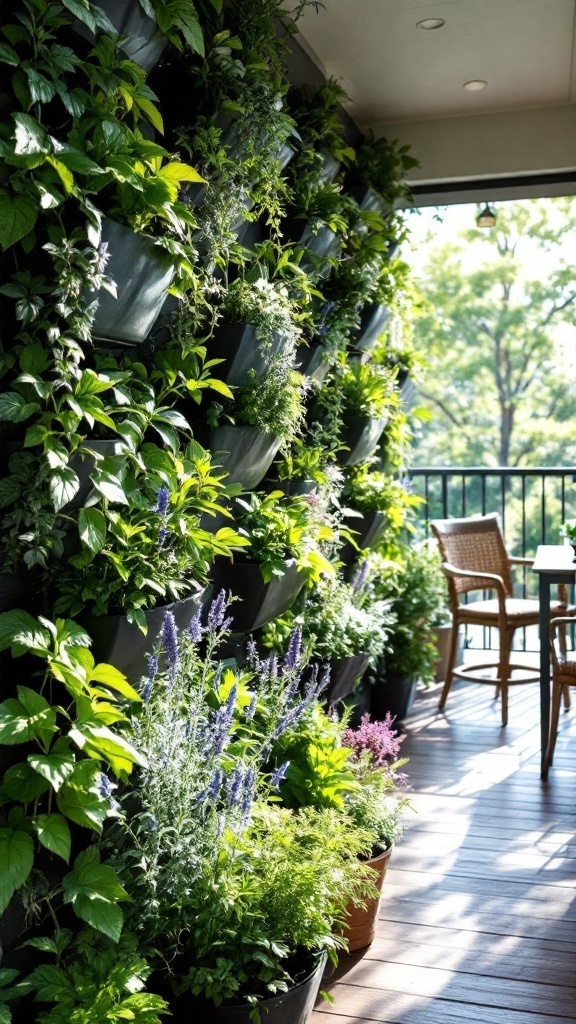
2 Vertical Gardens: Stack Your Way to Sanity
In tiny spaces, floor real estate is sacred. So go up.
Vertical gardening turns walls, railings, and fences into lush canvases. Think hanging baskets, trellises, pocket planters—even shoe organizers filled with herbs!
Perfect plants for vertical peace:
- Mint (mental clarity)
- Lavender (stress relief)
- Lemon balm (uplifting + bug repelling)
- Trailing lobelia (soothing blues)
- Strawberries (yes, edible joy counts as wellness)
Fun Fact: Vertical gardens create a natural privacy screen and sound barrier—a must in apartment complexes with paper-thin walls.
Do This: Group plants by vibe—calming (lavender + ferns), energizing (citrus + nasturtiums), or grounding (sage + rosemary). Add a mirror to reflect greenery for a visual double-whammy.
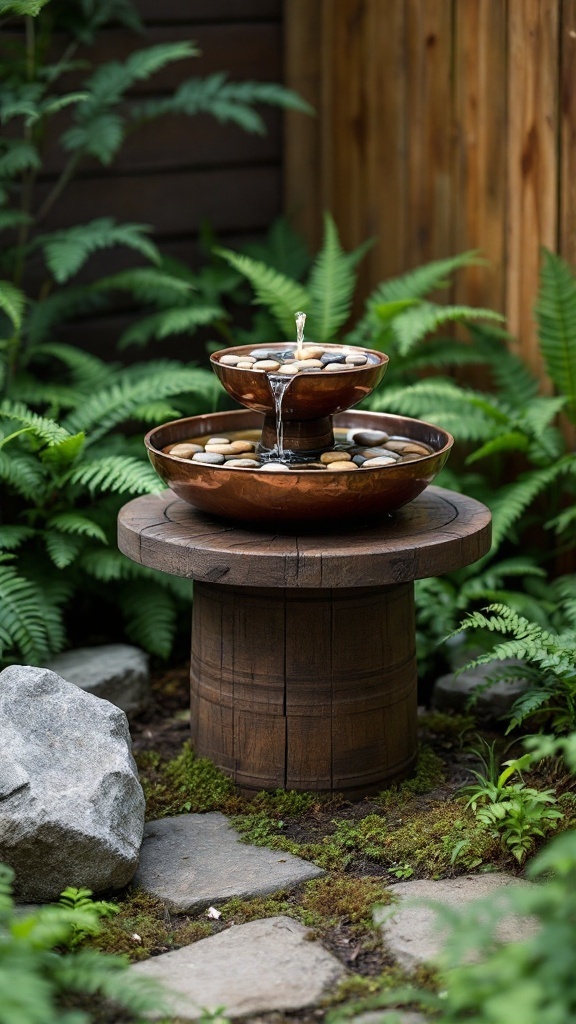
3 Add Gentle Sound with Water Features
City noise is chaotic. Water sound is consistent, rhythmic, and healing. Even a trickle can help rewire your nervous system.
Small-space options:
- Mini tabletop fountains
- Bamboo “drip and echo” spouts
- Rain chains
- DIY water bowls with floating candles or petals
Try a suikinkutsu: A hidden Japanese water feature that sings when drops hit a hollow pot underground. Mysterious and calming.
Science says: Soft water sounds trigger alpha brainwaves—those dreamy, calm states that enhance creativity and reduce anxiety.
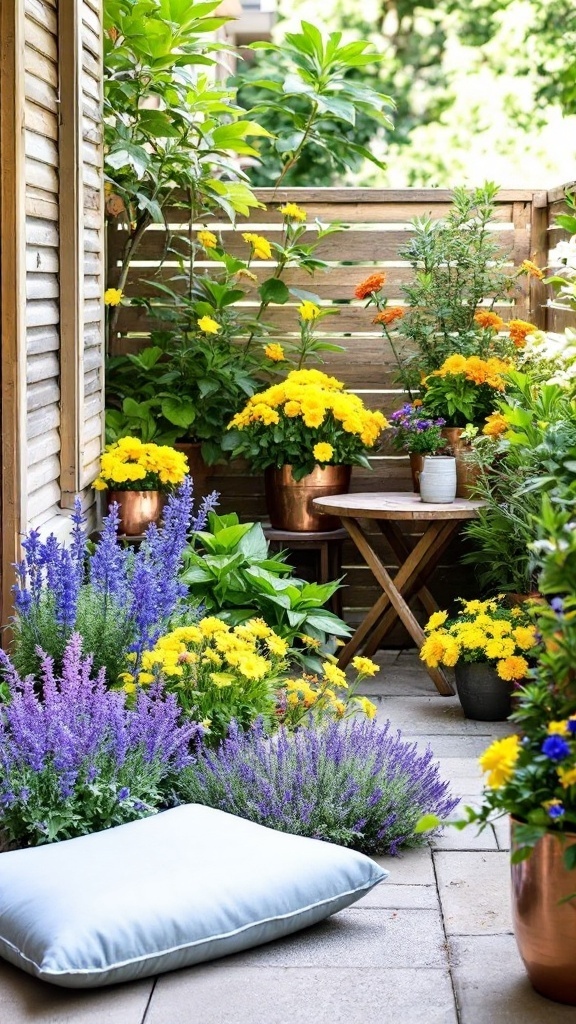
4 Use Color to Shift Mood
Color isn’t just decoration—it’s emotional architecture.
Create ‘color corners’ to guide your feelings:
- Blue & purple (calm) → lavender, salvia, pansies
- Yellow & orange (joy/energy) → calendula, marigolds
- Green (healing & grounding) → ferns, hostas
- Red (focus/passion) → geraniums, coleus
Seasonal layering tip: Add spring bulbs in fall, summer bloomers in spring, and colorful foliage for year-round color shifts. Mood = always in motion.
Mini Challenge: Close your eyes. What color do you need today? Now find a flower or herb that matches and plan to plant it.
Explore the lesser-known technique of “seasonal color shifting” – designing your plant palette to transition through therapeutic color sequences as seasons change. This approach creates a healing sanctuary that evolves throughout the year, providing different wellness benefits without requiring additional space or major replanting efforts.
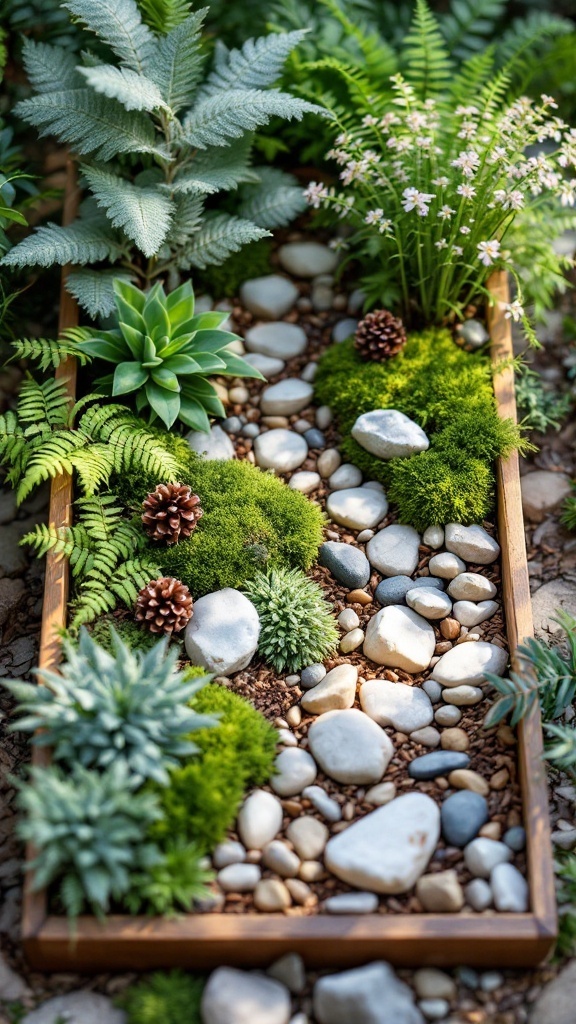
5 Touch Matters: Invite Your Hands In
Therapeutic gardens are all about texture. Let your hands roam.
Touch-friendly plants & surfaces:
- Velvet-soft lamb’s ear
- Wispy feather grass
- Rough bark or driftwood
- Warm sun-soaked stones
- Smooth river rocks in bowls
Mindful Moment: Pick up a stone each morning and warm it in your hands while you breathe slowly. This tiny ritual grounds you—and requires zero tech. infrastructure, making it ideal for small therapeutic garden designs.
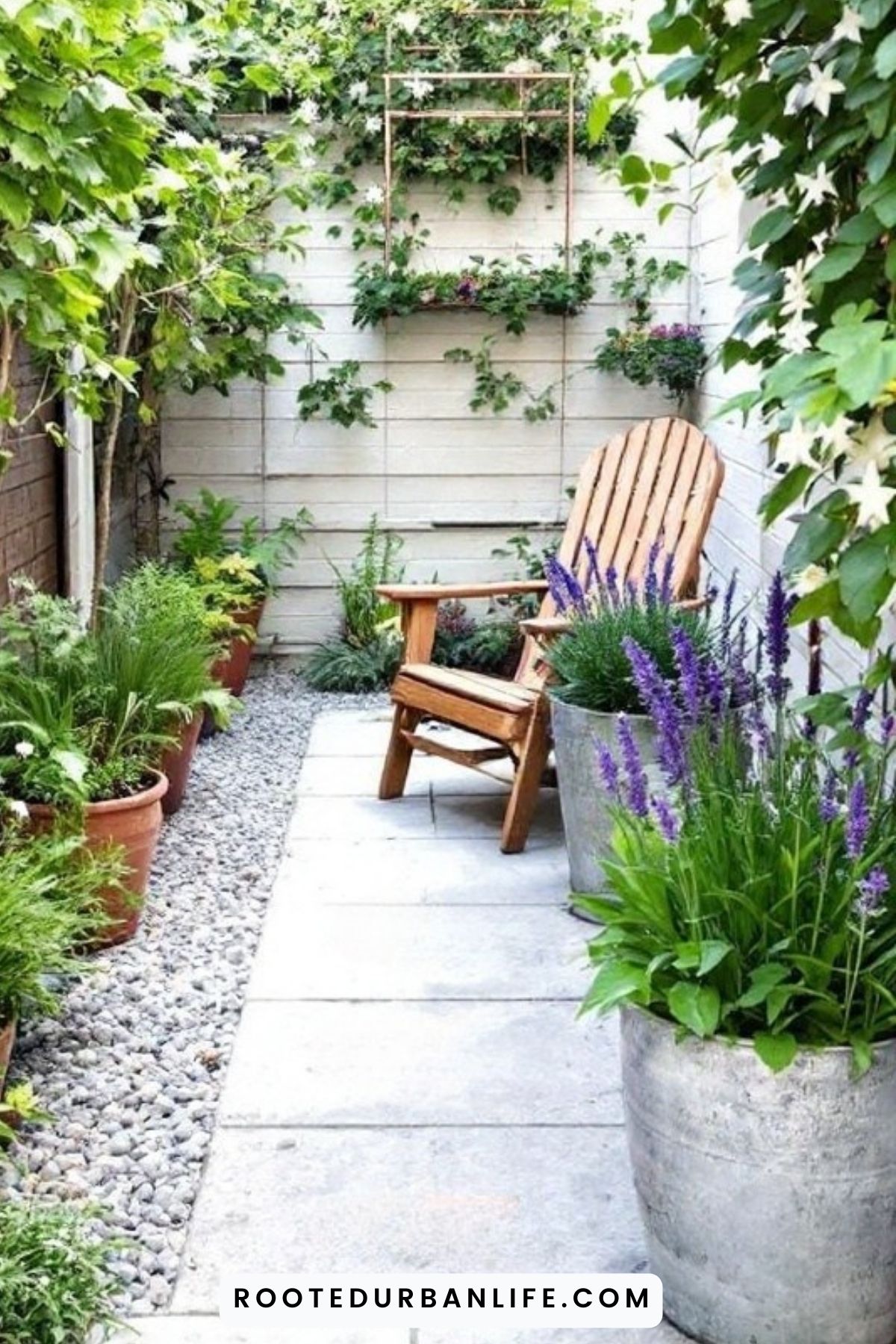
6 Scent Zones: Your Nose Knows
Scent bypasses logic and heads straight for memory and emotion. A whiff of rosemary can boost memory; lavender can lull you into sleep mode.
Create scent zones based on mood:
| Wellness Goal | Recommended Plants | Best Location |
|---|---|---|
| Relaxation | Lavender, Chamomile, Valerian | Near seating areas |
| Mental Clarity | Rosemary, Mint, Lemon Balm | Near entry points |
| Energy | Citrus, Basil, Geranium | Morning sun locations |
| Sleep Support | Jasmine, Evening Stock, Chamomile | Evening relaxation zones |
| Brought to you by rootedurbanlife.com | ||
Extra Fun: Try planting by scent timing: night-scented flowers like evening primrose, day-brighteners like geraniums. Let your garden shift through time.
7 Make a Mini Meditation Spot
Even a single focal point can become a meditation tool.
Ideas:
- A bowl of water that reflects the sky
- A symmetrical succulent like echeveria
- A rock cairn or stacked pebbles
- A small sculpture or bonsai tree
Design Tip: Use shakkei—“borrowed scenery”—by aligning your meditation object with a tree, skyline, or far-off view. Your mind sees more than your square footage.
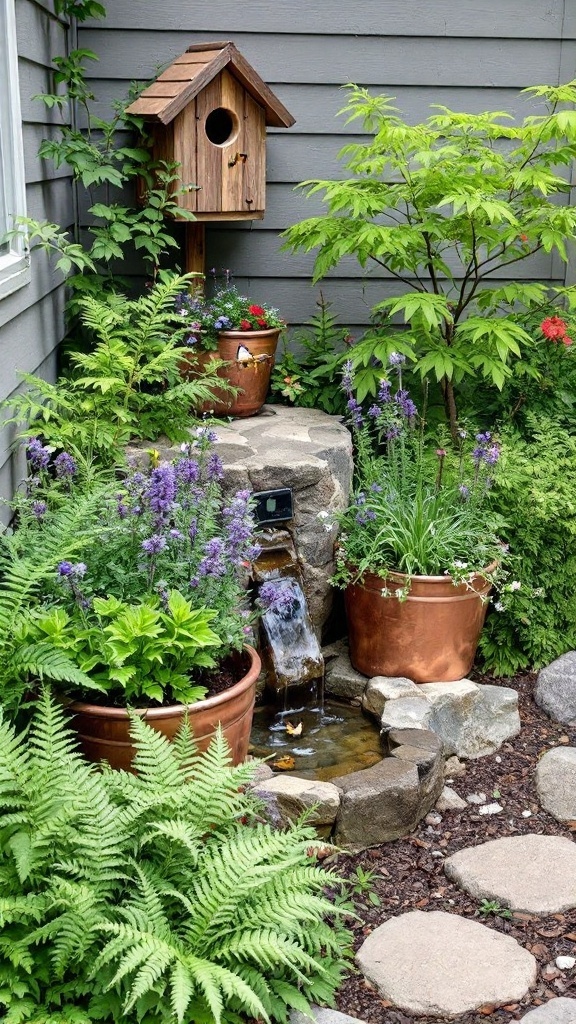
8 Choose Wellness-Boosting Plants That Work Overtime
Limited space = no slackers.
Pick plants that do double (or triple) duty:
| Plant | Visual Appeal | Therapeutic Benefits | Maintenance Level |
|---|---|---|---|
| Lemon Balm | Bright green foliage | Stress reduction, digestive aid | Easy |
| Echinacea | Purple cone flowers | Immune support, attracts pollinators | Medium |
| Lavender | Silver foliage, purple blooms | Anxiety relief, sleep support | Easy-Medium |
| Holy Basil (Tulsi) | Compact, aromatic | Stress adaptation, respiratory support | Easy |
| Mint varieties | Spreading habit | Digestive aid, cooling, energizing | Very easy |
| Brought to you by rootedurbanlife.com | |||
Fun Challenge: Create a 5-plant “herbal medicine chest” in one large container. Make a habit of touching, smelling, and caring for them daily.
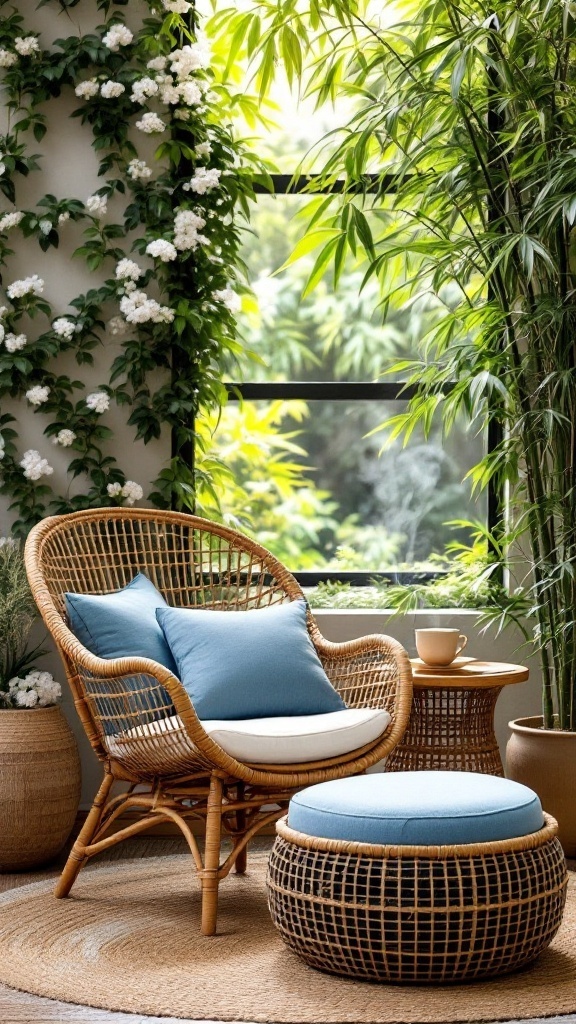
9 Thoughtful Seating = Instant Chill
Seating isn’t just functional—it shapes your relationship to the garden.
Follow “prospect & refuge” theory:
- Prospect = you can see out
- Refuge = you feel safe from behind
Cozy ideas:
- Folding chairs with thick cushions
- Outdoor floor pillows
- Bench with a view
- Hanging chair (why not feel like a jungle fairy?)
Design Trick: Frame your view—use tall plants, lattice, or vines around the seat to create a nest-like vibe. You’ll feel protected and expansive.
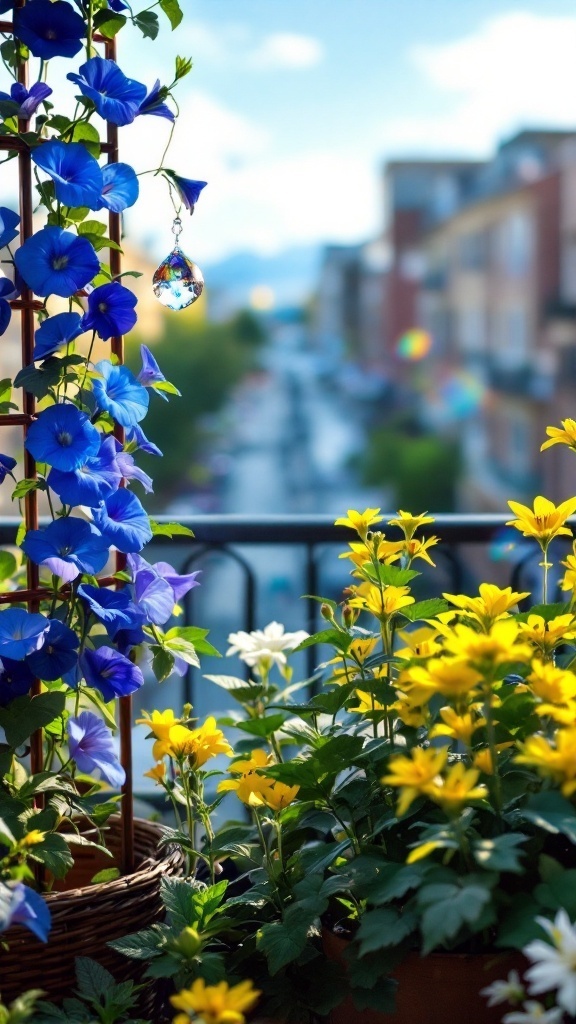
10 Let Nature Be Your Clock
Syncing your garden with light patterns helps reconnect with natural rhythms—even if you work a 9–5 and rarely see dirt.
Plant suggestions:
- Morning bloomers: Morning glories, calendula – awakening, energy
- Midday sun lovers: Rosemary, sage, tomatoes – productivity, focus
- Evening charmers: Night phlox, four o’clocks, moonflower – relaxation, transition
Evening Add-on: Add a solar lantern or string lights that come on at dusk—your cue to step outside, sip tea, and wind down.
11 Layer Meaning with Symbolism
Wellness isn’t just about looks—it’s also about what things represent to you.
Try these ideas:
- Feather or bell = lightness
- Shells = resilience
- Compass stone = direction
- Old teacup planter = comfort
Place objects that hold personal meaning where you’ll see or touch them often.
Mindful Exercise: Add one object to your garden that symbolizes your personal growth. Let it evolve with the seasons.
12 Make It Playful & Personal
This is your sanctuary—not a Pinterest post. Let it reflect your quirks.
Ideas:
- A tiny “library shelf” with gardening books
- Painted pots with quotes you love
- A hanging herb dryer made from driftwood
- Fairy lights and disco balls (yes, really)
- Kid-made art or a chalkboard wall
Let your wellness garden grow with you—not just your plants.
13 Frequently Asked Questions
What’s the minimum space needed for an effective wellness garden?
Even a 3×3 foot area can become an effective therapeutic garden when designed with sensory richness rather than size in mind. Focus on engaging multiple senses through carefully selected plants and textures.
Which plants offer the most therapeutic benefits for small gardens?
Multi-benefit plants like lavender (calming aromatherapy and edible flowers), lemon balm (stress reduction and digestive support), and compact Japanese maples (visual meditation focus) maximize wellness value in limited space.
How can I create privacy in my small healing garden?
Use vertical screening with climbing plants, bamboo panels, or living walls to create privacy without sacrificing floor space. Strategic container plants can block specific sightlines while maintaining airflow.
What’s the most important element for a beginner’s wellness garden?
Start with comfortable seating positioned to capture your space’s best qualities – perhaps morning light, a pleasant view, or protection from wind. This creates an immediate invitation to use the space regularly.
Can therapeutic gardens work in full shade conditions?
Absolutely. Shade gardens offer excellent cooling respite in urban environments. Focus on textural variety with ferns and hostas, incorporate sound elements, and use light-colored accents to brighten the space visually.
14 Key Takeaways:
- Small spaces, big impact: You don’t need a sprawling garden to create a wellness oasis. With the right plants and thoughtful design, even a tiny balcony can become a rejuvenating retreat.
- Engage all your senses: From colors that uplift to scents that soothe, your garden can offer therapeutic benefits for both body and mind. Prioritize touch, scent, and sound to create a deeply calming atmosphere.
- Vertical gardening is a game-changer: Maximize space by growing upwards—whether it’s with hanging baskets, trellises, or vertical planters. It’s an easy way to create a lush, space-efficient garden.
- Incorporate healing plants: Choose plants that have both aesthetic and wellness benefits—like basil, aloe vera, lavender, and lemon balm. They not only look good but also provide healing properties for the body and mind.
- Your garden is a personal sanctuary: Make your space unique by adding personal touches. Whether it’s a symbolic object or a playful seating arrangement, let your garden reflect who you are and what you need.
- Small shifts = big results: It’s all about creating moments of peace in your everyday life. Even a few plants, a comfy seat, or the sound of water can turn a tiny urban space into your own wellness retreat.
You don’t need a sprawling backyard to breathe deeper, feel calmer, and reconnect with yourself. With just a few pots, a splash of scent, and some intentional design, your balcony can become your new favorite room—open to the sky.
15 Next Steps
If you enjoyed this post, you might also love:


